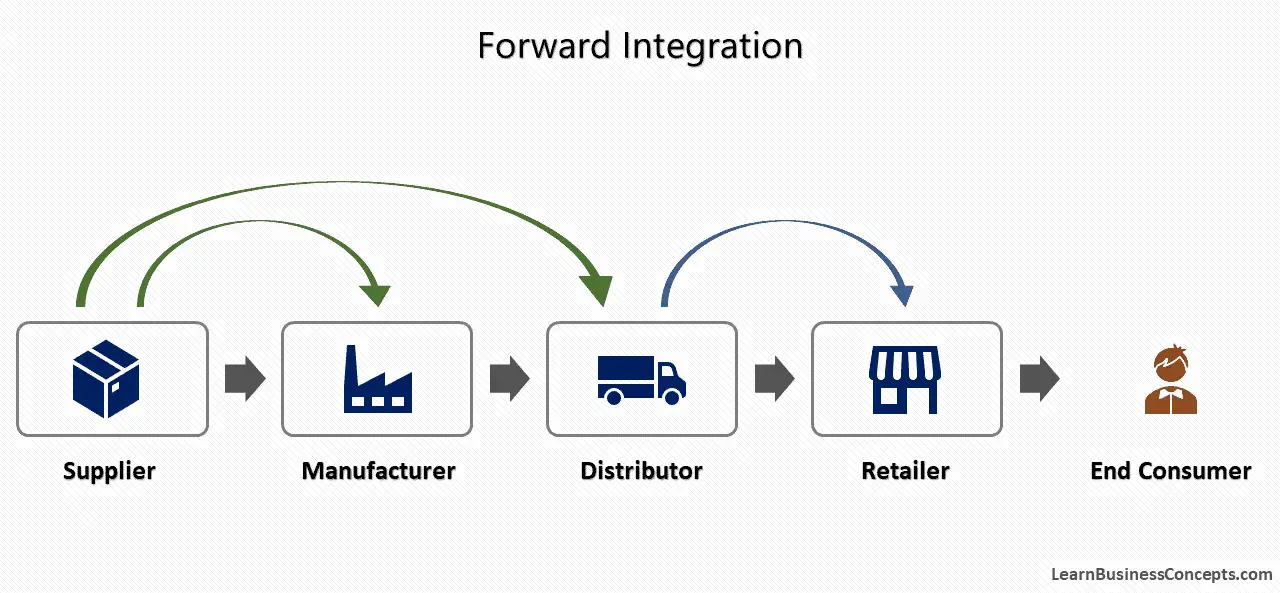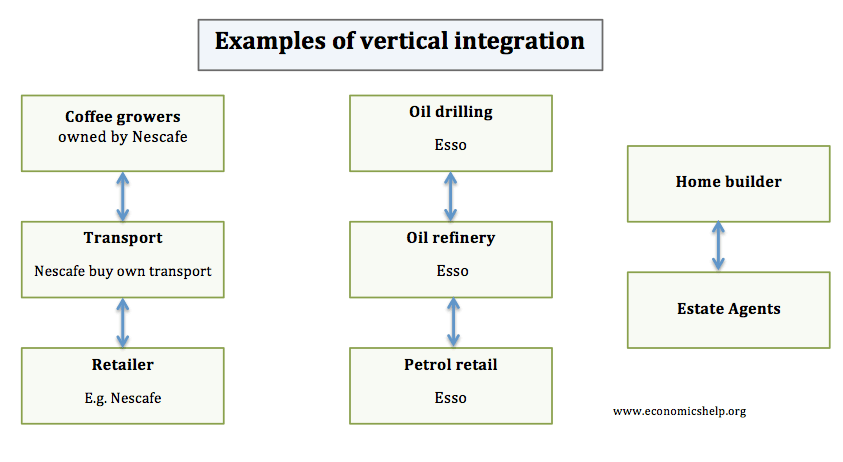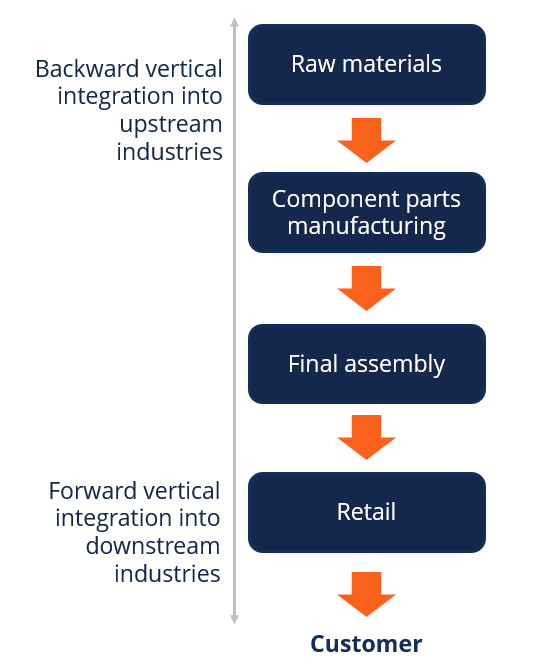Advantages of Forward Integration
Positive differentiation can be created. By acquiring the manufacturers of raw material a company exercises greater control over the supply chain process from the production of raw materials to the production of the end product.

Vertical Integration Definition Example Types Advantages
The greatest objective of backward integration is to increase the authority and ownership over the rearward of their value chain.

. The main advantage of this is to synergize the total operations to increase both revenue and profit. Better control The main advantage of forward integration is that it gives the ability to have complete control over the distribution aspect of the supply chain. Ad Dramatically simplify data connectivity through SQL-based integration.
This brings the company more control of its distribution chain. Vertical forward integration is typically determined by the accomplishment of current customers or clients involving your business in the forward direction of the corporate value- range. The following are some of the benefits that companies enjoy when they implement backward integration.
A brand removes the mediators between it and its customers and starts enjoying higher profits. This brings the company more command of its supply chain. Vertical integration creates predictability because more information is available to the organization.
It can improve a companys technological capabilities. This is possible if the volume of production can j result in the economics of scale better than the suppliers. Increase the companys market share A company may increase its market share by implementing a forward integration strategy.
A better understanding of customers. Selling to the customers directly can reduce the costs of distribution. Benefits of Forward Integration Generally forward integration allows companies to sustain profits while minimizing profit losses to intermediate entities.
This enables the company to chalk out well-planned strategies and train its sales staff. 5 Improve the Quality. Companies before application of this should be thoroughly aware of the cost and scope of the process.
With forward integration comes ownership and the ability to manage the demand for products. Some advantages of forward integration include. There is a synchronization of supply and demand and proper coordination in the supply chain.
Usually these costs may include transportation expenses that companies incur on. The overall average cost of the firm will decrease because if the divisions. What Are the Advantages of Vertical Integration.
If the manufacturing company engages in sales or after-sales industries it pursues forward integration strategy. Achieve economies of scale When companies lower their per-unit fixed cost they achieve what is called economies of scale. Disadvantages of Forward Integration High Initial Costs While acquiring a company ahead of its own in the supply chain can be profitable in the long run.
It can produce a differentiation-based competitive advantage. Once a company successfully implements forward integration and takes more control over the supply chain reduced costs and increased control over distributions can lead to a competitive advantage. Advantages Pros Positives Benefits of Forward Integration 1.
There are many advantages of vertical integration that can help your company increase its competitiveness and profitability in the marketplace. Forward integration can also provide potential benefits. ADVANTAGES AND DISADVANTAGES Globalization is the process by which different societies cultures and regionaleconomies integrate through a worldwide network of political ideas throughtransportation communication and trade.
It has a number of obvious strategic advantages. Key Differences between forwarding and Backward Integration Advantages Low costs due to the elimination of market transaction costs Reduction in transportation costs. A company implements forward integration strategies when it wants to exert a wider control over the value chain of its industry optimize economies of scope and target better cost structure.
Overall the specific advantages of forward integration include the following. Benefits of Forward Integration 1. Any Application Any Data Source Any Platform.
There is more access to production inputs. Retail channels produce real-time information that isnt filtered by third parties. On one hand where forward integration strengthens the company to maintain a grip or enhanced control on its product or services it can also lead to a situation where it brings about the dilution of a companys core competencies and business.
Advantages of Backward Integration It can achieve greater competitiveness by generating cost-savings. Advantages of Backward Integration. Synergize Operations and Increase Revenue The ultimate goal of forward integration is to increase the power and ownership over the forward of their value chain.
More direct control on the distribution of the products can add to the bottom line. Low costs as a result of the absence of market transaction expenses Transportation costs are reduced Coordination of supply chain as supply and demand are synchronized Increased market share. The strategy can be implemented for different reasons including.
Reduced costs Forward integration reduces the costs related to the marketing and sales process. Strategic independence Better opportunities for investment growth.

What Is Vertical Integration And What Are The Benefits Thestreet

Vertical Integration Advantages And Disadvantages Economics Help

Vertical Integration Strategy Advantages Disadvantages Types

Pdf Advantages And Disadvantages Of Vertical Integration In The Implementation Of Systemic Process Innovations Case Studies On Implementing Building Information Modeling Bim In The Finnish Construction Industry Semantic Scholar

Vertical Integration Understanding How Vertical Integration Works
Comments
Post a Comment